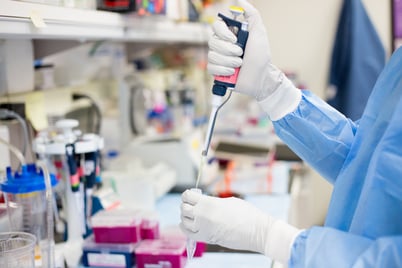Laboratory-developed tests (LDTs) have proliferated in the absence of clear guidelines and regulations. So how can laboratorians, physicians, and patients be assured of the quality of the diagnostic result? A panel of clinical genomics experts (Girish Putcha, MD, PhD, Director of Laboratory Science, Palmetto GBA; Roger Klein, MD, Principal, JD Consulting; Elaine Lyon, PhD, Medical Director, Molecular Genetics and Genomics, ARUP Laboratories; and Russell Garlick, PhD, CSO, SeraCare) delved into this topic during the audience Q&A session of a recent webinar hosted by GenomeWeb (you can download a full report on the entire series here).

Audience Question: Understanding that labs are moving towards better and more standardized approaches with validations of their own LDTs, what are ways we can ensure test results across different medical centers will correlate?
Elaine Lyon: One of the issues in inherited diseases is that different labs may have slightly different panels, and add a few other genes that another lab may not have. So when you’re ordering them, you have to look carefully to see what the [different] content is between the laboratories. What could help would be more clinical guidelines for the clinical validity, utility of these gene panels, and some help in establishing what should be on them for at least a minimum set. Then, obviously, proficiency testing that can show performance across laboratories, and I would encourage that those proficiency tests be published.
Girish Putcha: I think one way to address this specific question is having greater transparency around how specific labs and specific tests actually perform. Beyond that, efforts need to be made to develop standard reference samples that could be used across different laboratories to effectively compare issues around limits of detection and so forth. And finally, materials from NIST, SeraCare, Horizon, and so forth where, again, if you have common samples that can be effectively produced in bulk to allow the same sample to be tested in different laboratories, that will help provide greater transparency into how exactly the labs and the tests compare.
Russell Garlick: I would suggest that proficiency testing is the way to go with sample testing, but the samples have to be challenging to laboratories – with types of variants near the detection limit. I’ve also observed that laboratories go to great lengths during their validation work, but there’s really no way to publish them in the literature. We need an approach where laboratories can validate an assay, publish their results for viewing by the industry and their customers, say the oncologist, and then show the results with these really challenging proficiency testing samples. I think that will go a long way to approach the issue.
Roger Klein: I think it’s important to understand that for typical mutations that are common, recurrent mutations that are known, or mutations in genes that are known to have documented clinical importance and for which there’s a high level of evidence for use in therapy, the reproducibility rate for these assays is extremely high. I think that’s reflected in the proficiency testing that folks are talking about. Where we’re seeing differences in the tumor area is around the lower limit of detection of the assays, and I think it’s important to understand that cancer testing is complex. You have materials that can be heterogeneous and basically the input DNA reflects what the allele proportion of the mutation is in a true sense, and that can vary by laboratory as well, based on the enrichment or the particular specimen that’s extracted. The fundamental point is that while you can look with assurance at the vast majority of testing for typical recurrent mutations that are used to guide therapy, there can be some question surrounding the lower limit of detection, but often we don’t understand the clinical significance of those. So it’s challenging to even understand what some of these very low level mutations mean that might be detected by some labs and not by others.
Girish Putcha: The question about allele fraction and limit of detection and what is clinically relevant – I think this is the challenge, because the truth is, as far as I'm aware, we really don’t know. So the general idea is lower is better because it’s more sensitive, so you can detect it earlier, but the reality is you might also be picking up things that are subclinical, so that even if you treat them it’s not going to make much of a difference.
This is an excerpt from one webinar in a series of four. Download the full webinar series report to get the panelists’ expert views on validating clinical next-generation sequencing assays. The report also includes valuable case studies from renowned clinical genomics experts such as Drs. Greg Tsongalis, Bob Daber, and more.





